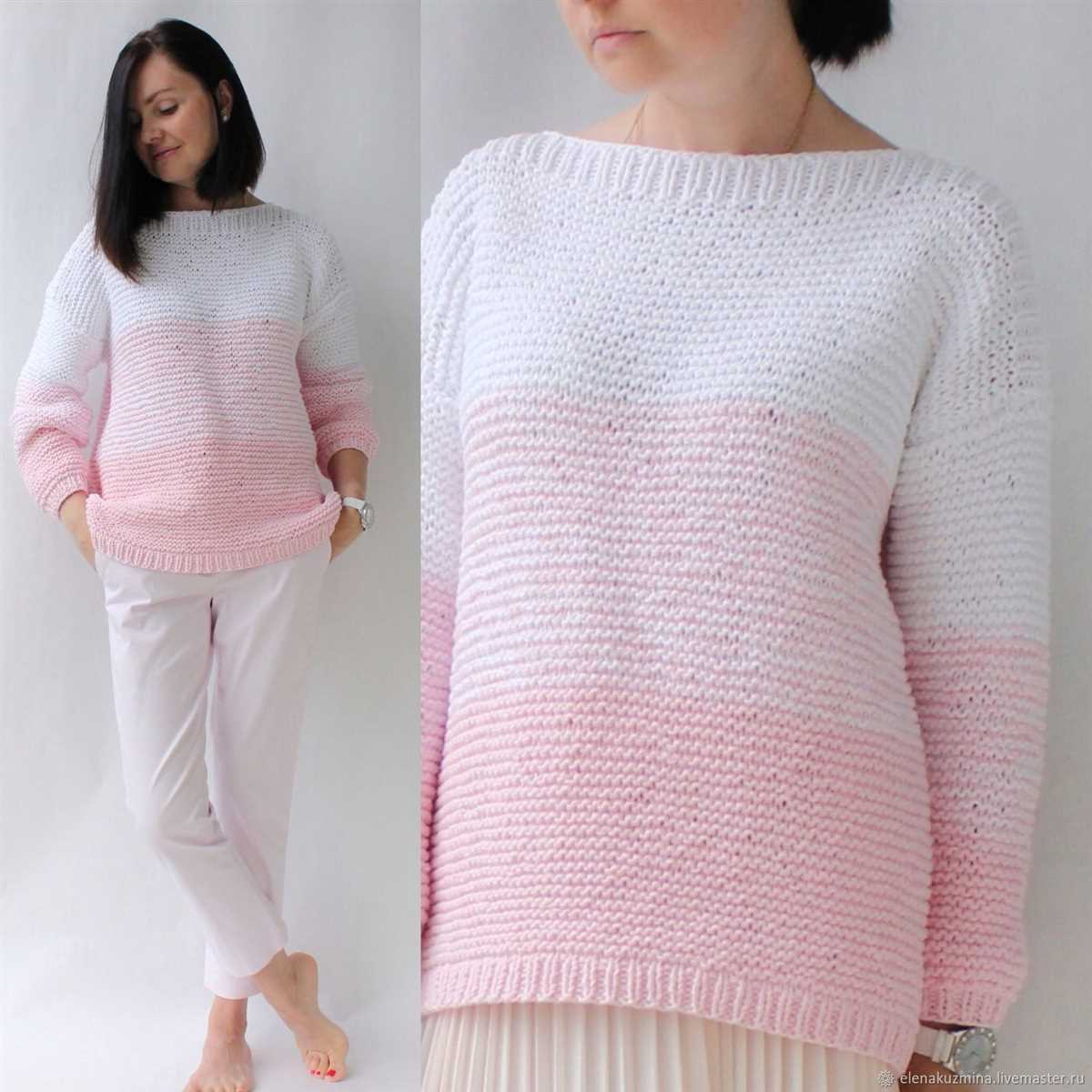
Knitting a garment or an accessory is a creative and relaxing way to pass the time. One way to add a touch of uniqueness and sophistication to your knitted projects is by incorporating gradient patterns. Gradient knitting involves using different colors of yarn to create a smooth transition between shades, creating a beautiful ombre effect.
Gradient knitting patterns are incredibly versatile and can be used in various projects, such as scarves, hats, shawls, or even sweaters. The possibilities are endless when it comes to creating gradient designs. You can choose to work with just two colors or opt for a more complex pattern with several different shades.
One popular technique used in gradient knitting is called “striping.” This technique involves knitting with two or more colors by alternating them row by row. The result is a striped pattern that gradually shifts from one shade to the next. Another technique is called “fade knitting,” where you slowly change the color of yarn throughout the project, creating a subtle blending of shades.
Gradient knitting patterns can also be combined with different stitch patterns and textures to create even more interesting designs. You can experiment with lace patterns, cables, or even colorwork to enhance the gradient effect and add more depth to your projects. The key is to choose colors that complement each other and create a pleasing transition.
Gradient Knitting Patterns
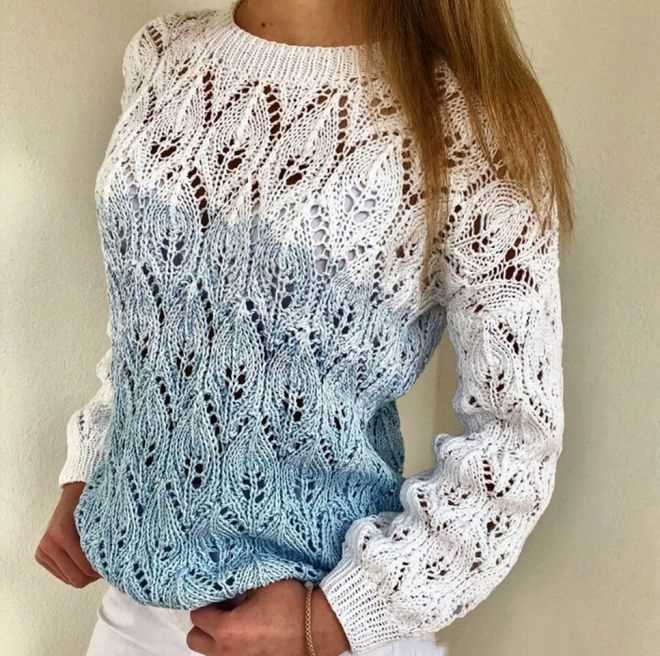
Gradient knitting patterns have become increasingly popular among knitting enthusiasts. These patterns involve using yarn that gradually changes color from one shade to another, creating a visually stunning effect in the finished project. The color progression can be subtle or bold, depending on personal preference and the desired outcome.
There are several techniques that can be used to achieve gradient effects in knitting. One common method is to use a yarn that has been dyed specifically for this purpose. These yarns come in a variety of color combinations and are often sold in sets or gradients, making it easy to create a seamless transition from one color to another.
Another technique is called “striping,” where multiple colors of yarn are used in the same project to create a gradient effect. This can be done by switching colors at regular intervals or by blending the colors together for a more blended look. It requires careful planning and attention to detail, but the end result can be truly stunning.
Gradient knitting patterns can be used for a wide range of projects, from scarves and shawls to sweaters and blankets. The possibilities are endless, and the results can be truly unique and eye-catching. Whether you choose to use specifically dyed gradient yarn or create your own gradient effects through color changes, gradient knitting patterns offer a creative and captivating way to elevate your knitting projects.
What are Gradient Knitting Patterns?
Gradient knitting patterns are designs that incorporate a gradual transition of color, typically from light to dark or vice versa. They create a beautiful ombre effect in knitted fabric, adding depth and visual interest to the finished piece. The gradient can be achieved by using a yarn that is dyed in progressively changing shades or by blending different colors together.
These patterns can be used to create various items such as scarves, shawls, blankets, and even garments. The gradual color change adds a unique touch to the knitted project, making it stand out and catch the eye. The possibilities are endless when it comes to gradient knitting patterns, as they can be customized and adapted to suit different tastes and preferences.
When working with gradient knitting patterns, it is important to consider the direction of the color change and how it will affect the overall design. Some patterns may call for a seamless transition, while others may incorporate blocks or stripes of color. The choice of stitch pattern can also enhance the gradient effect, with lace or textured stitches creating different effects compared to simple stockinette or garter stitch.
Gradient knitting patterns offer an exciting and creative way to explore color in knitting. They allow for experimentation with different shades and combinations, creating stunning results that are both visually appealing and satisfying to create. Whether you’re a beginner or an experienced knitter, there is a gradient pattern out there waiting to inspire your next project.
Why Use Gradient Knitting Patterns?
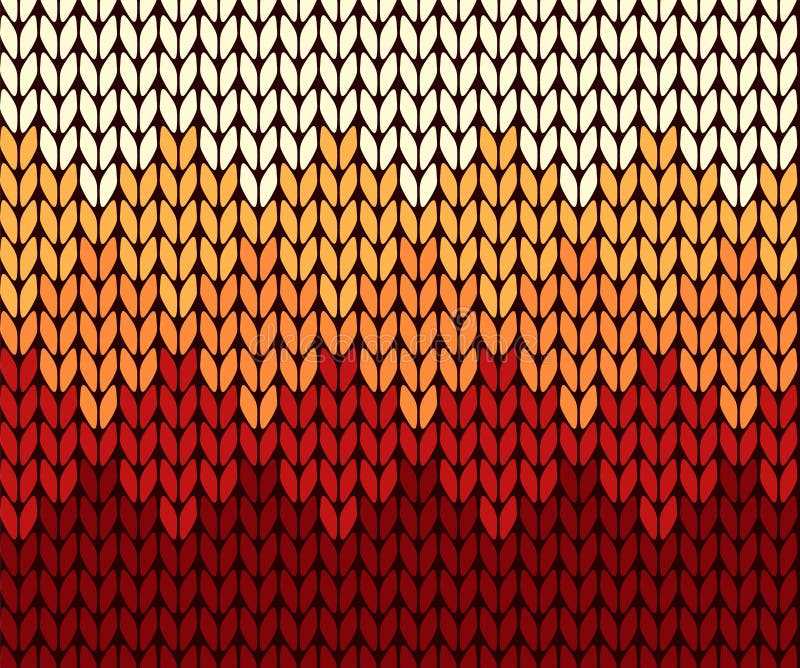
Gradient knitting patterns are a popular choice for many knitters due to their ability to create stunning and unique designs. These patterns use yarn that gradually changes color throughout the project, creating a beautiful gradient effect. This effect adds depth and visual interest to the knitted item, making it stand out from traditional solid-colored projects.
One of the main reasons to use gradient knitting patterns is the versatility they offer. With a gradient yarn, you can create various color combinations and effects by simply following the pattern. From subtle color transitions to bold and vibrant gradients, these patterns allow you to experiment with different looks and styles, making each project truly one-of-a-kind.
The gradient effect created by these patterns can also help to enhance the overall design of your knitted item. Whether you’re creating a scarf, a shawl, or a sweater, the changing colors can highlight specific stitch patterns, create interesting texture, or accentuate design elements. This can turn an ordinary knitted piece into a work of art that showcases your creativity and knitting skills.
Furthermore, gradient knitting patterns offer a sense of excitement and satisfaction as you watch the color change and the pattern unfold. Knitting with a gradient yarn can be an enjoyable and engaging process, keeping you motivated and eager to see the final result. It’s like watching a beautiful painting come to life as you knit stitch by stitch.
In conclusion, using gradient knitting patterns allows you to create unique, versatile, and visually stunning knitted items. Whether you’re a beginner or an experienced knitter, these patterns offer endless possibilities for creativity and exploration, making your knitting projects truly extraordinary.
Choosing Yarn for Gradient Knitting Patterns
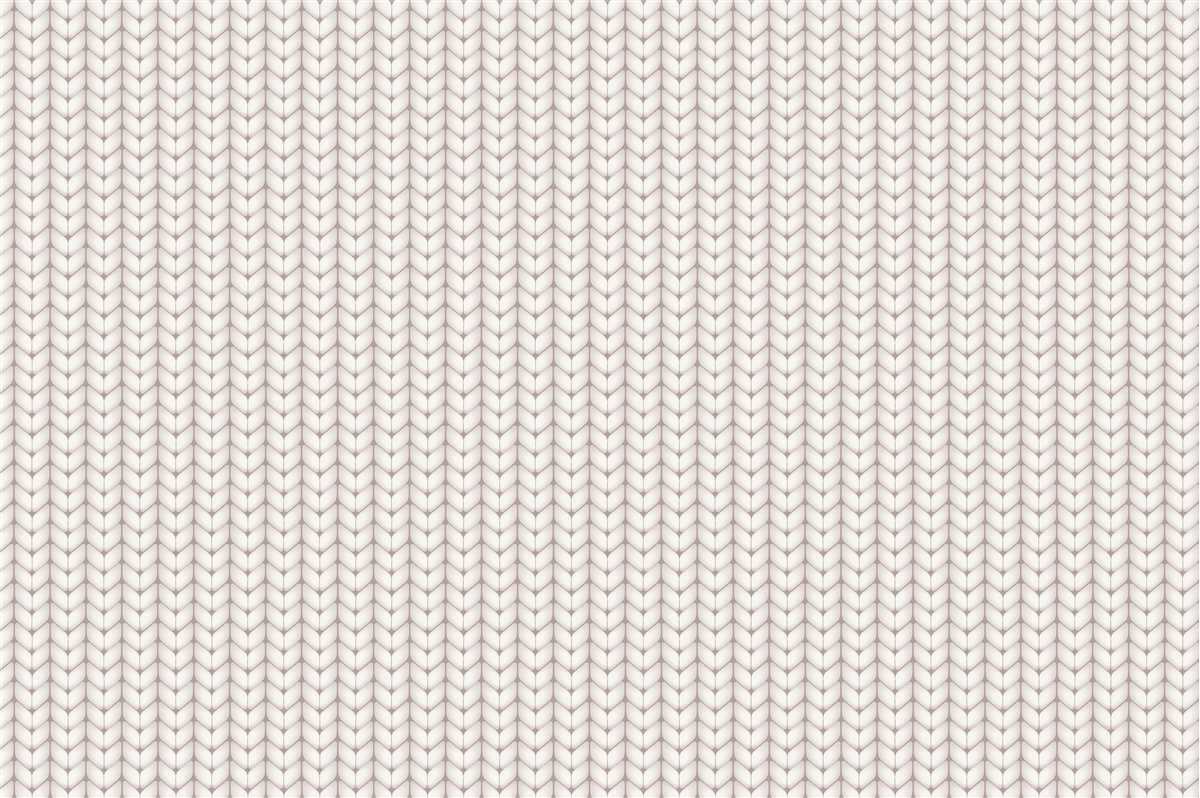
When it comes to gradient knitting patterns, one of the most important factors to consider is the choice of yarn. The right yarn can make all the difference in achieving the desired effect and showcasing the gradient colors in your project. Here are some key points to keep in mind when selecting yarn for gradient knitting patterns.
Weight and Fiber Content
The weight and fiber content of the yarn will greatly affect the drape, texture, and overall look of your gradient knitting project. For example, a lighter weight yarn, such as lace or fingering weight, is perfect for achieving a delicate and ethereal gradient effect. On the other hand, a heavier weight yarn, like worsted or bulky weight, will provide a bolder and more pronounced gradient. Consider the desired outcome of your project and choose a yarn weight that will help you achieve it.
Additionally, the fiber content of the yarn can also impact the appearance of the gradient. Natural fibers, such as wool or alpaca, have excellent color absorption and blending properties, making them ideal for gradient knitting projects. Synthetic fibers, like acrylic or nylon, may not absorb dye as well and can result in a less smooth or vibrant gradient. Consider the characteristics of the fiber content when selecting yarn for your gradient project.
Color Transition and Gradient Effect
Another important consideration when choosing yarn for gradient knitting patterns is the color transition and gradient effect you want to achieve. Some yarns come pre-dyed in gradient colors, allowing for a seamless transition from one hue to another. These gradient yarns are convenient and can save you time and effort in creating the gradient effect yourself. Alternatively, you can opt for individual skeins of yarn in different colors and manually blend them together to create a custom gradient. Whichever option you choose, make sure the colors blend smoothly and create the desired gradient effect in your knitting project.
Availability and Budget
Lastly, consider the availability and budget constraints when choosing yarn for gradient knitting patterns. Some specialty gradient yarns can be more expensive or harder to find, while others may be more readily available and affordable. Take into account your budget and the accessibility of different yarn options in your area. Don’t be afraid to explore different brands and suppliers to find the perfect yarn that fits your project requirements and budget.
In summary, selecting the right yarn for gradient knitting patterns involves considering the weight and fiber content, the color transition and gradient effect, as well as the availability and budget constraints. By carefully choosing the yarn, you can enhance the beauty of your gradient knitting projects and bring your vision to life.
Basic Techniques for Working with Gradient Yarns
Gradient yarns are a popular choice for knitters looking to add depth and dimension to their projects. With their smooth transition from one color to another, gradient yarns create beautiful effects that can be incorporated into a wide range of patterns. To make the most of these yarns, it’s important to understand some basic techniques that will help you achieve the desired gradient effect.
1. Choosing the Right Pattern
When working with gradient yarns, it’s important to choose a pattern that will showcase the color transitions effectively. Patterns that involve simple stitches or textures, such as garter stitch or stockinette stitch, work well with gradient yarns as they allow the colors to shine. Lace patterns can also be a great choice, as they provide an opportunity to show off the color changes in a delicate and intricate way.
2. Planning the Color Transition
Before starting your project, take some time to plan the color transition of your gradient yarn. Most gradient yarns come with a recommended color sequence, but you can also customize the transition to suit your preferences. If you want a gradual transition, you may choose to fade from one color to another over several rows or even throughout the entire project. Alternatively, you can opt for a more abrupt transition by changing colors within a single row or section of your work.
3. Blending Techniques
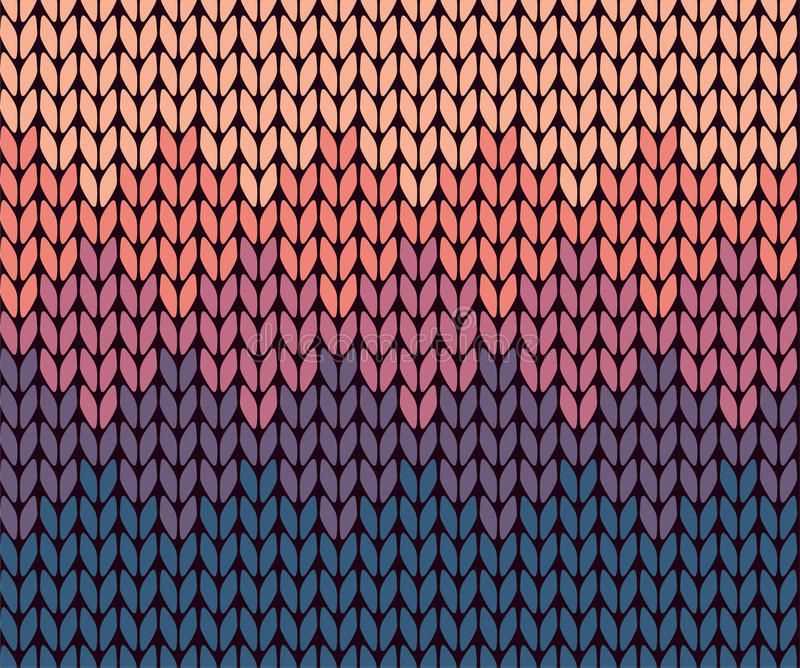
To achieve a smooth color transition, it’s important to use appropriate blending techniques. One common technique is to alternate rows or rounds between the different colors of the gradient yarn. This helps to blend the colors together and create a seamless transition. Another technique involves using slip stitches to create a gradient effect. By slipping certain stitches in a different color, you can create a subtle blend between the colors.
4. Stranding or Gradient Striping
When working with gradient yarns, you have the option of either stranding the colors together or creating gradient striping. Stranding involves carrying both colors along the back of your work and switching between them as needed. This technique creates a blended effect with a smooth color transition. Gradient striping, on the other hand, involves using different colors for different sections of your project, creating distinct stripes of color.
By following these basic techniques, you’ll be able to make the most of your gradient yarns and create stunning projects that showcase the beautiful color transitions. Whether you’re knitting a shawl, a sweater, or even a pair of socks, the gradient effect will add a touch of elegance and sophistication to your work.
Simple Gradient Knitting Patterns for Beginners
Gradient knitting patterns are a great way for beginners to experiment with different colors and create beautiful, unique projects. These patterns typically involve using multiple colors of yarn to create a gradual transition from one shade to another. The end result is a stunning and eye-catching piece that is sure to impress.
If you’re new to gradient knitting, there are plenty of simple patterns available that are perfect for beginners. One option is to knit a basic scarf or shawl using a gradient yarn. This eliminates the need for changing colors and allows you to focus on perfecting your knitting technique while still achieving a beautiful gradient effect.
Another simple gradient knitting pattern for beginners is the ombre hat. This pattern involves starting with one color at the brim of the hat and gradually transitioning to a different color toward the crown. The result is a stylish and modern hat that is perfect for chilly weather.
If you’re feeling more adventurous, you can try knitting a gradient sweater or cardigan. These patterns typically involve using multiple colors to create a gradient effect across the entire garment. While these projects may be a bit more complex, they are a great way to challenge yourself and create a truly unique piece of clothing.
Overall, gradient knitting patterns are a fun and creative way for beginners to experiment with different colors and create beautiful projects. Whether you choose to start with a simple scarf or dive right into a sweater, the possibilities are endless. So grab your needles and let your creativity shine!
Advanced Gradient Knitting Patterns for Experienced Knitters
For experienced knitters looking to take their skills to the next level, advanced gradient knitting patterns offer a exciting challenge. These patterns incorporate complex color changes and stitch techniques to create stunning gradient effects in your knitted projects. From beautiful ombre shawls to intricate colorwork sweaters, these patterns will surely showcase your knitting expertise.
One popular technique used in advanced gradient knitting patterns is the fade effect. This involves blending multiple colors together in a gradual transition, creating a seamless gradient from one shade to another. This technique requires careful selection of colors and expert stitch manipulation to achieve the desired effect. The end result is a visually striking piece that showcases your mastery of color blending.
Another technique commonly found in advanced gradient knitting patterns is stranded colorwork. This involves working with multiple colors in each row or round to create intricate color patterns. The skill lies in managing the tension of the yarns and ensuring the floats between colors are not too tight or too loose. By incorporating gradient colors into stranded colorwork, you can create stunning visual effects that add depth and complexity to your knitted projects.
Some advanced gradient knitting patterns also incorporate lace or cable stitch patterns, adding another layer of complexity to the design. These patterns require careful attention to detail and precise stitch placement, as the gradient effect needs to flow seamlessly within the lace or cable motifs. With intricate stitch combinations and gradient color changes, these patterns truly push the boundaries of what can be achieved with knitting.
So, if you’re an experienced knitter looking for a challenge, advanced gradient knitting patterns are the perfect way to expand your skills and create truly unique and stunning projects. Whether you choose to experiment with fade techniques, stranded colorwork, or intricate stitch patterns, these patterns will test your knitting abilities and result in beautiful, eye-catching pieces that will impress both yourself and others.
Creating Your Own Gradient Knitting Patterns
Gradient knitting patterns are a popular trend in the knitting world, allowing you to create beautiful color transitions in your projects. While there are many pre-designed gradient patterns available, creating your own can add a unique touch to your knitting projects. Here are some tips to help you get started on designing your own gradient patterns.
1. Choose Your Colors
Before you start designing your gradient pattern, you’ll need to choose the colors you want to use. Think about the effect you want to achieve and select a range of colors that blend well together. You can choose a monochromatic color scheme, where the shades of the same color gradually transition, or opt for complementary colors for a more vibrant look.
2. Plan Your Transition
Once you have your colors selected, you’ll need to plan how you want them to transition in your knitting project. This can be done by dividing your project into sections and assigning a color to each section. You can choose to have a gradual transition, where each section blends smoothly into the next, or create more defined blocks of color.
One popular technique for creating a gradient effect is using the Fibonacci sequence, where each section is a different width based on the numbers in the sequence. This can create a visually pleasing pattern with a natural flow.
3. Experiment with Stitch Patterns
To add interest to your gradient knitting project, you can experiment with different stitch patterns. Some stitch patterns can enhance the gradient effect, while others can create texture and depth. Consider using lace, cables, or colorwork techniques to highlight the color transitions in your design.
4. Keep Track of Your Colors
When working on a gradient knitting project, it’s important to keep track of the colors you’re using and the order in which they appear. This can be done by creating a color chart or using stitch markers to indicate color changes. By staying organized, you can ensure that your gradient pattern looks consistent and cohesive.
Designing your own gradient knitting patterns allows you to unleash your creativity and create unique projects. By carefully selecting colors, planning the transition, experimenting with stitch patterns, and keeping track of your colors, you can create stunning gradient designs that will impress others and bring joy to your knitting journey.
Tips and Tricks for Achieving Smooth Gradient Transitions
Gradient knitting patterns are a popular choice among knitters who want to add visual interest and depth to their projects. However, achieving smooth gradient transitions can sometimes be a bit tricky. Here are some tips and tricks to help you create seamless and flawless gradients in your knitting.
Selecting the Right Yarn
The first step to achieving smooth gradient transitions is to select the right yarn. Look for yarns that are specifically designed for gradient knitting, as they will have a gradual color change and will make it easier to achieve a seamless transition. Alternatively, you can also create your own gradient by selecting different shades of the same color, making sure they blend well together.
Planning Your Colors
Before you start knitting, spend some time planning your colors and deciding on the order in which they will be used. This will help you achieve an even and balanced gradient. You can create a color chart or write down the sequence of colors to follow as you knit. It’s also a good idea to swatch your colors first to see how they transition together and make any adjustments if needed.
Blend the Colors
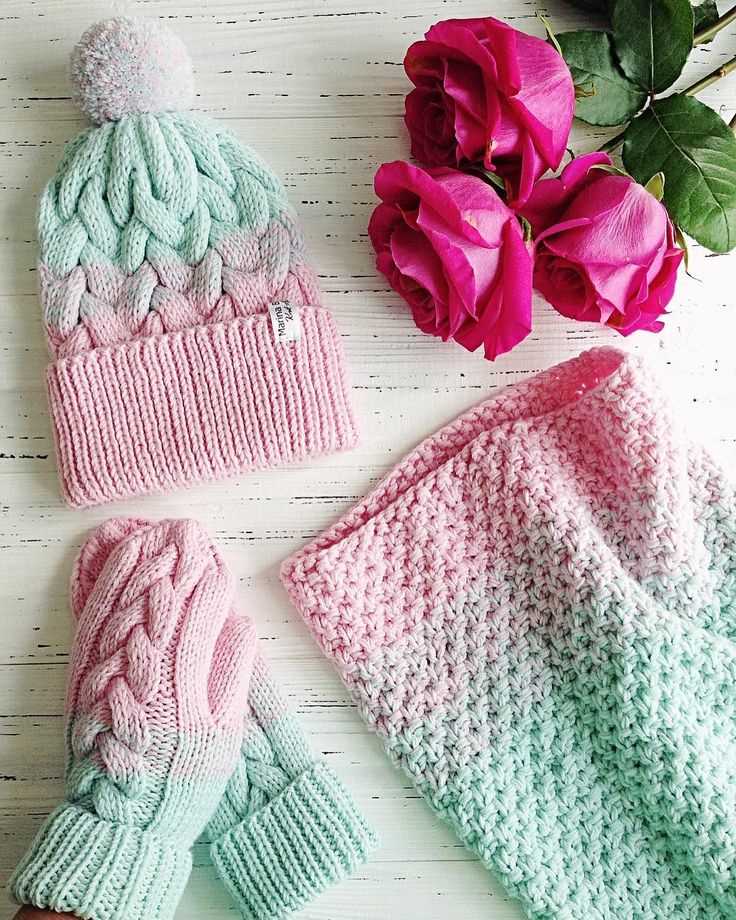
When it’s time to transition from one color to the next, there are a few techniques you can use to blend the colors seamlessly. One popular method is to knit a few rows or rounds using both colors together, gradually decreasing the old color and increasing the new color. This will help create a smooth transition and avoid any abrupt color changes. Another technique is to use the slip stitch method, where you slip the last stitch of the old color and knit the first stitch of the new color together. Experiment with different blending techniques to find the one that works best for you.
Take It Slow
Achieving smooth gradient transitions requires patience and attention to detail. Take your time when transitioning between colors, ensuring that each stitch is neat and even. Avoid rushing through the process, as this can result in uneven color changes. Remember to always knit with a consistent tension, as this will also help maintain the smoothness of the gradient.
By following these tips and tricks, you’ll be able to create beautiful gradient knitting patterns with seamless transitions. Experiment with different color combinations and blending techniques to add depth and visual interest to your knitting projects.
Adding Texture and Stitch Patterns to Gradient Knitting
Gradient knitting is a fascinating technique that creates smooth color transitions in a knitted project. However, adding texture and stitch patterns to gradient knitting can take your project to a whole new level. By incorporating different stitches and techniques, you can create stunning patterns that enhance the visual interest of your gradient.
One way to add texture to your gradient knitting is by using different stitch patterns. For example, you can try using cables or lace stitches to create intricate designs that stand out against the gradient colors. The contrasting textures will create a beautiful visual effect and make your project more visually appealing. You can also experiment with different stitch sizes and densities to create even more texture and depth.
To create even more interest, you can combine different stitch patterns within the gradient itself. For instance, you can start with a simple garter stitch section at the beginning, then transition to a lace stitch pattern, and finish with some cables. This will create a visually stunning gradient that showcases the different stitch patterns and keeps the viewer engaged.
In addition to stitch patterns, you can also incorporate other techniques like colorwork or mosaic knitting to add texture to your gradient. These techniques involve using different colors in specific patterns to create a textured effect. By strategically placing different colors within the gradient, you can create a beautiful interplay of color and texture.
In conclusion, adding texture and stitch patterns to gradient knitting opens up a world of creative possibilities. Whether you choose to incorporate different stitch patterns, experiment with stitch sizes and densities, or include other techniques like colorwork, the result will be a visually stunning gradient knitting project that is both unique and eye-catching.
Finishing and Blocking Gradient Knitting Projects
Finishing and blocking your gradient knitting projects is an essential step to achieve a polished and professional finish. By blocking your project, you can even out stitches, open up lacework, and ensure that your finished garment or accessory looks its best. Here are some tips and techniques to help you finish and block your gradient knitting projects:
1. Weaving in Ends
Before you begin blocking, make sure to weave in all the loose ends of yarn. This will give your project a neater and more polished appearance.
2. Wet Blocking
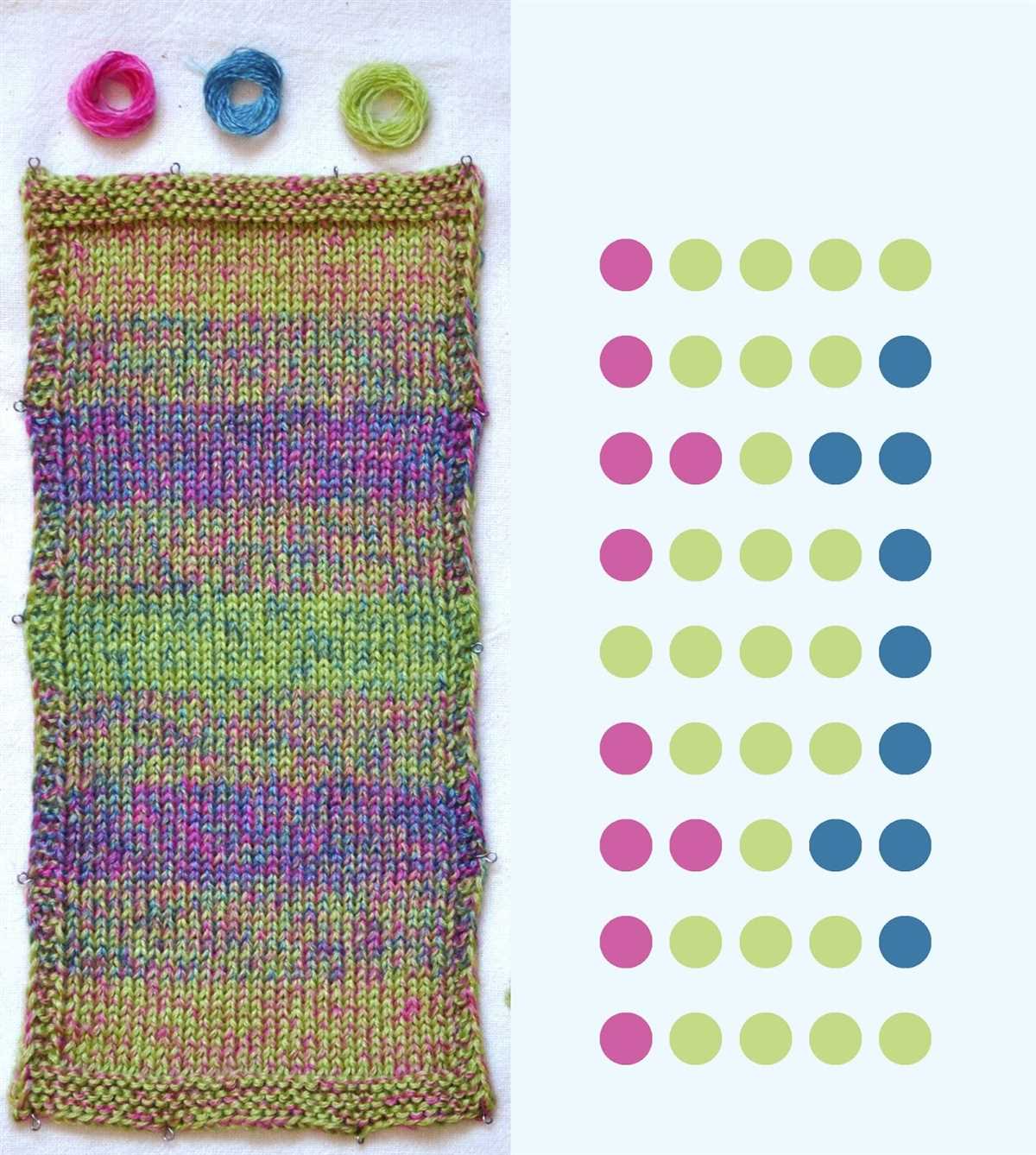
Wet blocking is the most common blocking method used for gradient knitting projects. To wet block, soak your completed project in lukewarm water with a little bit of gentle detergent. Gently squeeze out the excess water and lay the project flat on a clean towel. Shape the project gently to your desired dimensions and pin it in place. Allow it to dry completely before unpinning.
3. Steam Blocking
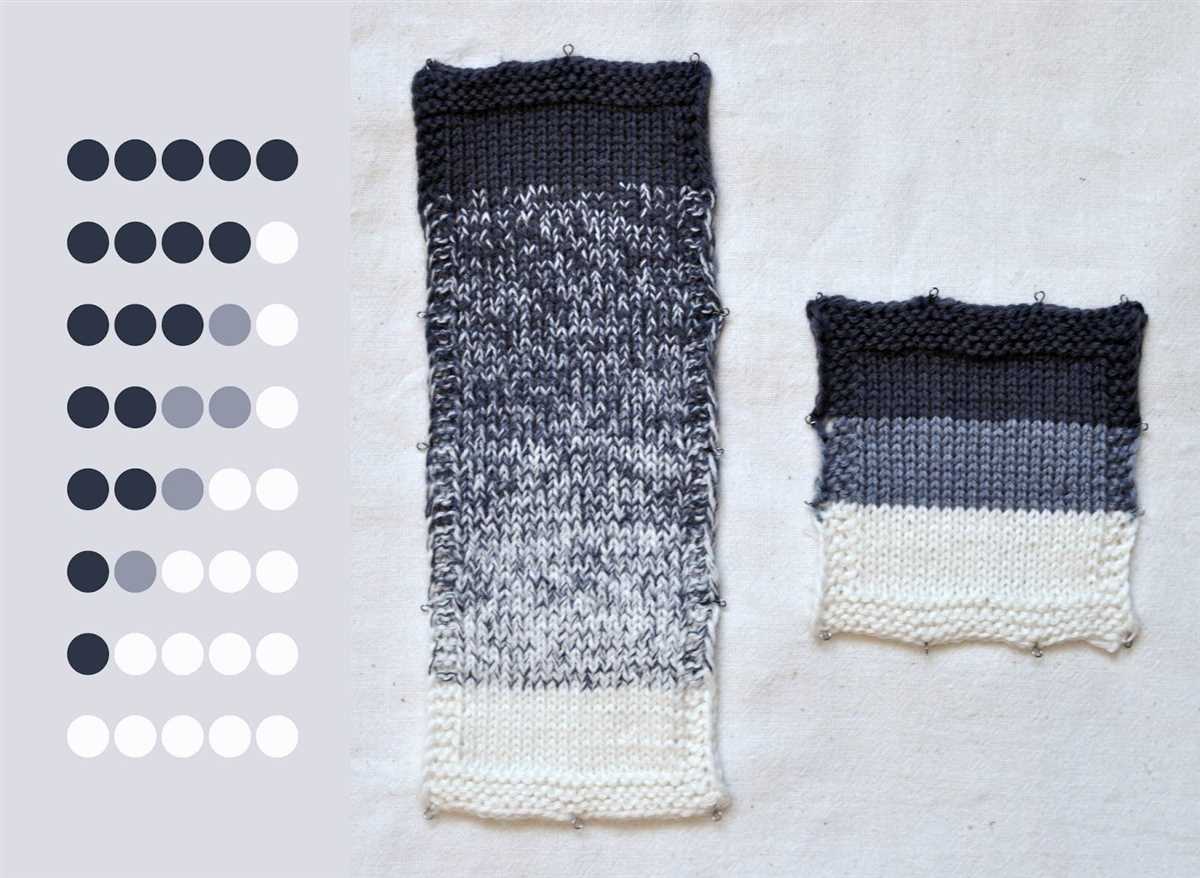
If you are working with yarn that cannot be wet blocked, steam blocking is a great alternative. Hold a steam iron a few inches away from your project and gently steam it, making sure not to touch the iron to the yarn. Use a pressing cloth to protect delicate fibers. Shape the project as desired while it is still warm and let it cool and dry completely before handling.
4. Blocking Tools
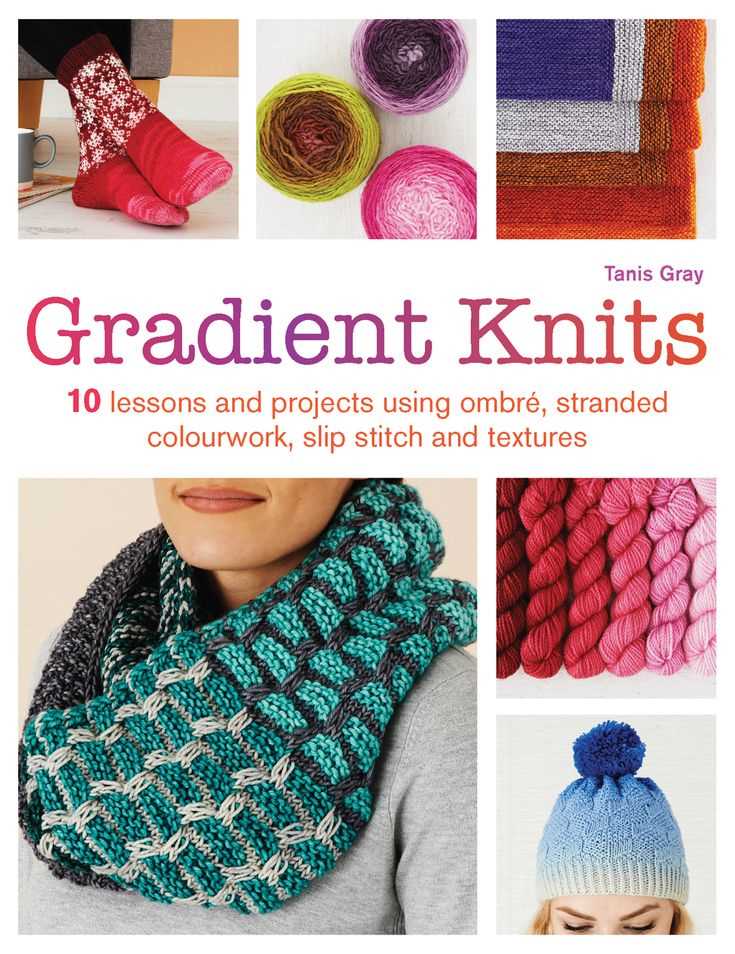
Investing in blocking tools such as blocking mats, T-pins, and blocking wires can make the blocking process easier and more effective. Blocking mats provide a stable surface to pin your project, T-pins hold the project in place, and blocking wires help straighten and shape edges and borders.
5. Washing and Care
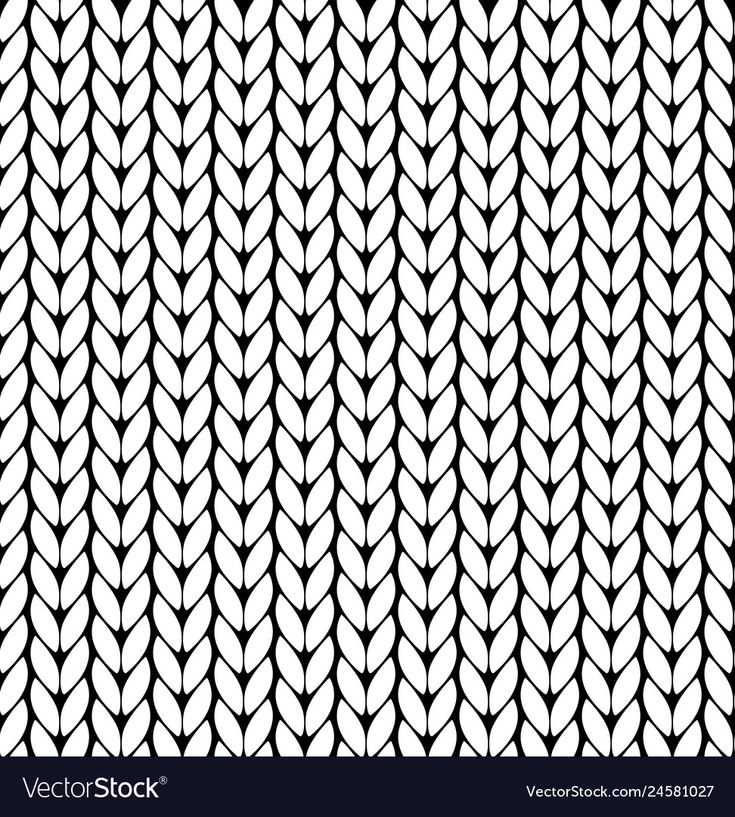
Once your gradient knitting project has been blocked, it is important to follow the care instructions for the specific yarn that you used. Some may require hand washing, while others may be machine washable. It is also important to store and handle your finished project with care to prevent stretching or damage.
With these finishing and blocking tips, you can ensure that your gradient knitting projects look their best and last for years to come. Enjoy the process of creating beautiful gradients with your knitting skills!